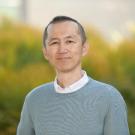Event Date
California Air Resources Board Research Seminar: Real-World Tire and Brake Wear Emissions
Event Overview
Exhaust emissions have steadily decreased due to legislative efforts and advancements in engine and control technologies. Further reduction of tailpipe emissions is expected by implementing a California Governor’s executive order (N-79-20) that, by 2035, new gasoline-powered cars and passenger trucks will not be sold in California. Meanwhile, brake and tire-wear will become dominant sources of vehicular PM2.5 and PM10 emissions. It is critical to understand their physical and chemical characteristics in examining near-road community exposure and potential adverse health effects. University of California Riverside measured brake and tire-wear emissions collected near two major highways: I-70 at Long Beach and I-5 at Anaheim, and characterized their roadside PM contributions, particle size distributions, and chemical compositions. The contribution from non-exhaust sources to total roadside PM2.5 was 1 to 1.5 times greater than the exhaust PM2.5 without including secondary PM2.5 such as sulfates and nitrates. The main components of near-road PM2.5 were organic matters, elements (Al, Si, Ca, Fe, Ti, Zn), and elemental carbon. These elements would be associated with road dust, brake-wear, tire-wear PM with markers of Al, Si and Ca, Fe and Ti, and Zn, respectively. Some of the heavy metals could associate with adverse health impact when exposed, which requires further comprehensive health risk and impact study.
This research seminar provides an update on University to California, Riverside’s research that highlights the near-roadside brake and tire-wear PM emission measurements and contribution of non-exhaust PM in real-world environment along with their chemical and physical characteristics.
Speakers

Professor Jung received his Ph.D. at the University of Minnesota with focus on aerosol and diesel emissions. Before conducting his Ph.D. study, he has worked for Hyundai motors over 5 years. Before joining UCR as a faculty he conducted his postdoc study at UC Davis on particle toxicity. He is a recipient of SAE Teetor Educational award, SAE Environmental Excellence in Transportation award, and a fellow of SAE. He has conducted studies related to regulations and quantification of emissions funded from CARB and CRC past 15 years. His interest lies in aerosol and pollution.
